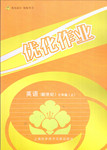题目内容
When Suzanne Kail, an English teacher at a public high school in Magnolia, Ohio, was told that she would be required to teach her students Latin and Greek word roots, she rolled her eyes. Kail believed in a progressive approach to education, in which active participation in meaningful learning was the most important. In an account of her experience in the English Journal, she wrote, “asking students to do rote memorization (机械记忆) was the opposite of what I believed in most.” Still, her department head insisted on it. She was sure her students wouldn’t like it, either.
Kail was surprised — as was anyone who took a look at the recent studies supporting the effectiveness of “old school” methods like memorizing math facts, reading aloud, practicing handwriting and so on. While the education world is all excited about so-called 21st-century skills like cooperation, problem solving and critical thinking, this research suggests that we might do well to add a strong dose (一剂) of the 19th century to our children’s schooling.
As soon as Kail began teaching her students the Greek and Latin origins of many English terms — that the root “sta” means “put in place or stand”, for example, and that “cess” means “to move or withdraw”— they eagerly began recognizing familiar words including the roots, like “statue” and “recess”. Kail’s students started using these terms in their writing, and many of them told her that their study of word roots helped them answer questions on the SAT and on Ohio’s state graduation exam. For her part, Kail reported that she no longer saw rote memorization as “evil”.
That’s also true of another old-fashioned method drilling math facts, like the multiplication table (乘法表). Although many progressive educators speak ill of what they call “drill and kill” (kill students’ love for learning, that is), rapid mental retrieval (检索) of basic facts is required for doing more complex and more interesting kinds of math. The only way to achieve this, so far as anyone has been able to determine, is to practice and practice. Indeed, many experts have observed the wide gap between the math scores of American and Chinese students on international tests. Asian schools focus heavily on math facts. Failure to do so can effectively close off the higher realms (范围) of mathematics — a study found that most errors made by students working on complex math problems were due to a lack of automaticity (自动性) in basic math facts.
60. What did Suzanne Kail think was the most important in learning at first?
A. Memorizing math facts. B. Problem solving ability.
C. Students’ active participation D Studying word roots...
61. How does the study of word roots benefit students?
A. It helps students build a large vocabulary more easily.
B. It provides students with motivation for rote memorization.
C. It helps students break up their conventional thinking.
D. It gives students more knowledge about Greek and Latin.
62. Why is there a gap between the math scores of American and Chinese students?
A. Because American students’ love for learning has been killed.
B. Because American students are not very familiar with basic math facts.
C. Because Chinese students have a higher math level than American students.
D. Because Chinese students are becoming more creative than American students.
63. The author might NOT approve of .
A. using rote memorization B. abandoning 21st-century methods
C. practicing handwriting D. remembering basic math facts repeatedly
C ABB

 培优三好生系列答案
培优三好生系列答案 优化作业上海科技文献出版社系列答案
优化作业上海科技文献出版社系列答案The following is the information about plays which will be on these days.
Big and Little
It is a play written by Botho Strauss and directed by Laurence Strangio, featuring (由……主演) second-year Performing Arts students. It is about a lonely woman living in a big city. From the play, we can learn how to get along well with our friends, our family, our lovers, ... and with ourselves.
A dreamlike journey in search of identity ...
When:15-17 March, 7:30 pm
Where: Drama Theatre, Centre for the Performing Arts, Building 68, Clayton campus (校园)
Tickets: Adults $10, Concessions (优惠票价) $5
You can get the tickets at the door.
Love Play
It is written by Moira Buffini and directed by Trent Baker, featuring Performing Arts students.
First-year Performing Arts students present
Love Play. It follows a series of unexpected meetings that have taken place in the same place in London across 2,000 years, through the centuries from the Romans to the Elizabethans to the present day. Love Play is a comedy that challenges the reasons and ways we want love.
When:17-19 April, 8 pm
Where: Drama Theatre, Centre for the Performing Arts, Building 68, Clayton campus
Tickets: Adults $10, Concessions $5
You can get the tickets at the door.
Smashed
It is a play written by Lally Katz and directed by Suzanne Chaundy, featuring second-year Performing Arts students. Smashed is about friendship, time travel and death. Writing for TheAge, Helen Thomson calls the play "a wonderful memory of childhood on the edge (边缘) of adulthood."Smashedp raises invention, imagination and girl power.
When: 24-26 April, 8 pm
Where: Drama Theatre, Centre for the Performing Arts, Building 68, Clayton campus
Tickets: Adults $10, Concessions $5 You can get the tickets at the door.
【小题1】 We can know from the passage that Moira Buffini ______.
| A.is a character in Big and Little |
| B.is the director of Smashed |
| C.wrote the play Love Play |
| D.once wrote for The Age |
| A.All the plays begin at 8 pm on Clayton campus. |
| B.The tickets have different prices but all are sold at the door. |
| C.Love Play is a comedy which has a different idea about love. |
| D.All the plays are performed by second-year Performing Arts students. |
| A.friendship, time travel and death |
| B.the life experience of a lonely woman |
| C.the life of a Performing Arts student on Clayton campus |
| D.unexpected meetings in London during the past 2,000 years |